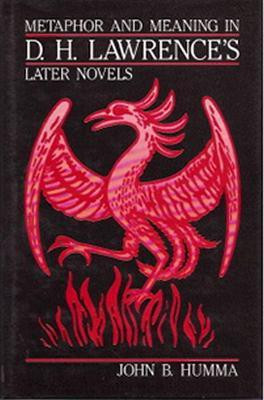Metaphor and Meaning in D.H.Lawrence's Later Novels - Balance Energy and Restore Health--A Western Doctor Tells You How(English, Hardcover, Humma John B.)
Quick Overview
Product Price Comparison
Although D.H.Lawrence's later novels have been the subject of much discussion by critics, few scholars have recognized or dealt with his sense of craft. By examining Lawrence's careful and finely orchestrated strategies with language, especially metaphor, Humma argues that a number of the longer works - from ""Aaron's Rod"" on and including the posthumously published ""The Virgin and the Gipsy"" - are small masterpieces. Different in kind from ""Women in Love"" or ""The Rainbow"", these fictions are very important in their own way. Humma maintains that the early and middle novels work largely through powerful symbols. Those of the last decade, though, develop through an intricate interlace of metaphor and symbolic detail. Humma devotes a chapter each to ""Aaron's Rod"", ""The Ladybird"", ""Kangaroo"", ""St. Mawr"", ""The Plumed Serpent"", ""The Virgin and the Gipsy"", ""Lady Chatterley's Lover"", and ""The Eascaped Cock"". ""Aaron's Rod"", as a transitional work reveals much about Lawrence's narrative method and its dependence upon combinations of images. ""The Plumed Serpent"", Humma suggests, is Lawrence's most ambitious failure. Other critics have faulted plot, character and meaning, but Humma sees incoherent metaphors as the basis for those other problems. Because Lawrence's metaphors shape myths essential to central actions and meanings, the reader cannot fully appreciate the later novels without studying the strategic function of metaphor in them. When Lawrence's method is successful as it is in ""Lady Chatterley's Lover"", for example, figures of speech overlap each other, crossing boundaries in a web of ""interpenetrating metaphors"" that provide both structural integrity and thematic resonance. Paying close attention to the texts, ""Metaphor and Meaning in D.H. Lawrence's Later Novels"" show that Lawrence was far from the indifferent craftsman in his later fiction that he has frequently been considered. In fact, Lawrence was accutely aware that language and meaning are inseperable, that technique, as Mark Schorer said, is discovery. John Humma's perspective upon the art and meaning of Lawrence's later work provides a major revaluation of this last phase in the writer's career.


